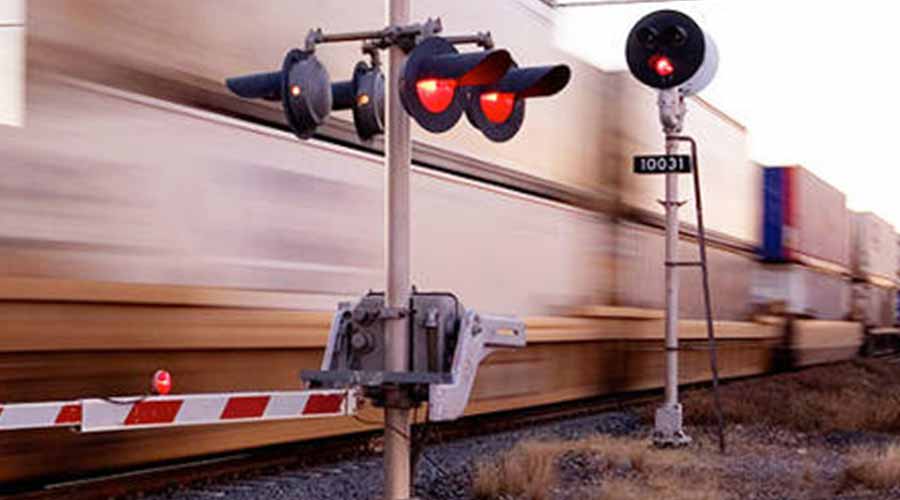Newsletter Sign Up
Stay updated on news, articles and information for the rail industry
Stay updated on news, articles and information for the rail industry
RAIL EMPLOYMENT & NOTICES
Rail News Home
Canadian National Railway - CN
Rail News: Canadian National Railway - CN
4/2/2001
Rail News: Canadian National Railway - CN
CN continues to combat open access on its western Canadian grain lines
advertisement
Believing forced-access running rights would imperil light-density grain lines in Canada’s Prairie region, Canadian National Railway Co. March 29 re-instituted an abandonment moratorium on western Canada grain-dependent branch lines.
The moratorium would remain in effect in Manitoba, Saskatchewan and Alberta while CN and provincial governments determine how to balance Prairie grain network road and rail components.
The moratorium follows CN’s late-March road relief and shipper tax credit proposal to the Canadian government, designed to lower shipper rates and divert 100 million tons of freight annually from trucks to rail.
CN officials believe the tax credit, which would target $160 million in annual fuel taxes already levied on Canadian railroads, also would reduce greenhouse gas emissions while saving Canada’s provincial governments $500 million annually in highway construction and maintenance costs.
"CN already has told provincial governments that the company is prepared to work with them and local communities to find innovative ways of sharing the acquisition and operating costs of proposed grain-hauling short lines," said Paul Tellier, CN president and chief executive officer, in a prepared statement. "[The moratorium] would enhance the economic viability of rail transportation of grain and could spell the difference between success and failure of a short-line venture."
Tellier believes OmniTRAX Inc’s open-access proposal and CanRail West Inc. initiative in Manitoba and Saskatchewan — designed to gain Canadian Transportation Act (CTA)-approved access to 1,500 miles of CN’s and Canadian Pacific Railway’s grain branch lines — would divide already marginal revenues between two carriers.
"Operating costs also would increase because of duplication of service," he said. "In the end, light-density grain-dependent branch lines would be pushed from marginal viability to non-viability."
However, OmniTRAX believes the CTA was designed to uphold the transportation needs of shippers and producers.
"With the likelihood of further significant system consolidation and rumored corporate mergers, the system needs competition," said OmniTRAX Chief Operating Officer Gary Rennick at the CTA review panel’s Feb. 26 rail symposium in Winnipeg, Manitoba.
In the meantime, CN plans to continue working closely with Prairie Alliance for the Future (PAFF), a non-profit organization spearheaded by Brotherhood of Maintenance of Way Employes that plans to create a cooperative of rail workers, unions, farmers and rural communities to operate 1,000 miles of CN grain lines in Manitoba and Saskatchewan.
PAFF would operate a low-cost grain network based on leased rail lines and hired-by-the-mile locomotives, designed to move grain from local communities to CN’s mainline.
The moratorium would remain in effect in Manitoba, Saskatchewan and Alberta while CN and provincial governments determine how to balance Prairie grain network road and rail components.
The moratorium follows CN’s late-March road relief and shipper tax credit proposal to the Canadian government, designed to lower shipper rates and divert 100 million tons of freight annually from trucks to rail.
CN officials believe the tax credit, which would target $160 million in annual fuel taxes already levied on Canadian railroads, also would reduce greenhouse gas emissions while saving Canada’s provincial governments $500 million annually in highway construction and maintenance costs.
"CN already has told provincial governments that the company is prepared to work with them and local communities to find innovative ways of sharing the acquisition and operating costs of proposed grain-hauling short lines," said Paul Tellier, CN president and chief executive officer, in a prepared statement. "[The moratorium] would enhance the economic viability of rail transportation of grain and could spell the difference between success and failure of a short-line venture."
Tellier believes OmniTRAX Inc’s open-access proposal and CanRail West Inc. initiative in Manitoba and Saskatchewan — designed to gain Canadian Transportation Act (CTA)-approved access to 1,500 miles of CN’s and Canadian Pacific Railway’s grain branch lines — would divide already marginal revenues between two carriers.
"Operating costs also would increase because of duplication of service," he said. "In the end, light-density grain-dependent branch lines would be pushed from marginal viability to non-viability."
However, OmniTRAX believes the CTA was designed to uphold the transportation needs of shippers and producers.
"With the likelihood of further significant system consolidation and rumored corporate mergers, the system needs competition," said OmniTRAX Chief Operating Officer Gary Rennick at the CTA review panel’s Feb. 26 rail symposium in Winnipeg, Manitoba.
In the meantime, CN plans to continue working closely with Prairie Alliance for the Future (PAFF), a non-profit organization spearheaded by Brotherhood of Maintenance of Way Employes that plans to create a cooperative of rail workers, unions, farmers and rural communities to operate 1,000 miles of CN grain lines in Manitoba and Saskatchewan.
PAFF would operate a low-cost grain network based on leased rail lines and hired-by-the-mile locomotives, designed to move grain from local communities to CN’s mainline.


 2025 MOW Spending Report: Passenger-rail programs
2025 MOW Spending Report: Passenger-rail programs
 Gardner steps down as Amtrak CEO
Gardner steps down as Amtrak CEO
 Guest comment: Oliver Wyman’s David Hunt
Guest comment: Oliver Wyman’s David Hunt
 Women of Influence in Rail eBook
Women of Influence in Rail eBook
 railPrime
railPrime







